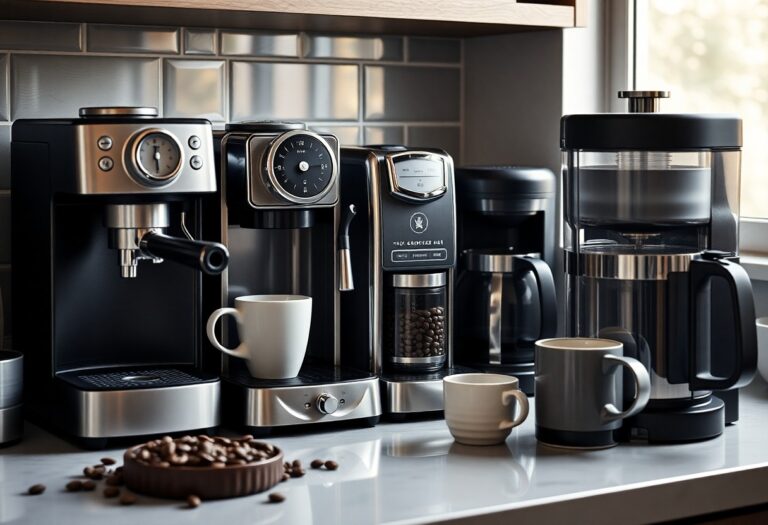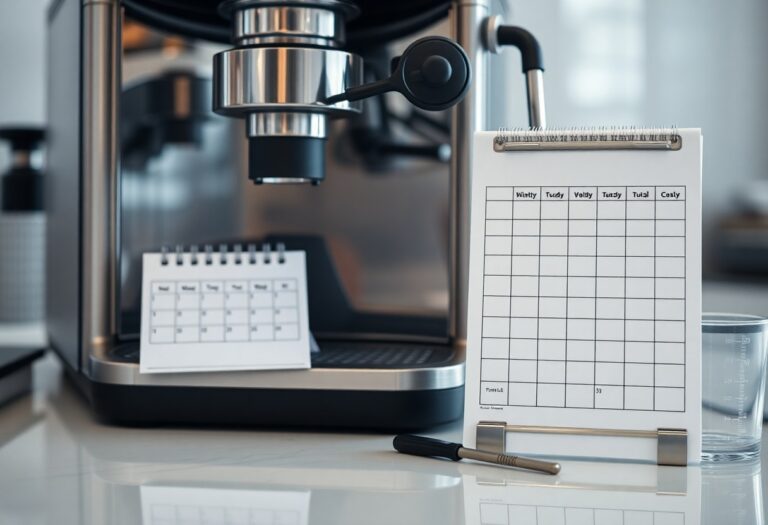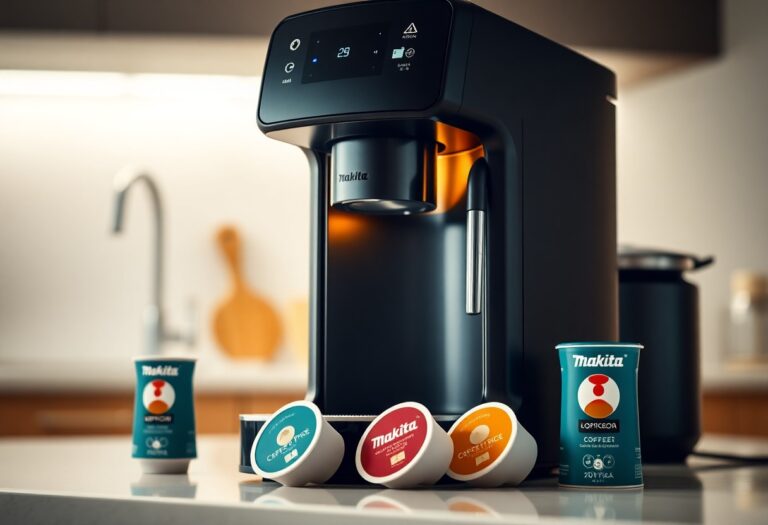What is Needle Maintenance on a Keurig Coffee Machine – K-Cup System
Over time, your Keurig coffee machine’s K-Cup system can accumulate coffee grounds and residue that might hinder performance, making needle maintenance crucial for your brewing experience. This process involves cleaning the puncture needles that pierce the K-Cup, ensuring optimal flow and flavor extraction. Neglecting this maintenance can lead to clogs and even potential damage to your machine. By regularly performing needle maintenance, you can enjoy better-tasting coffee every time, prolonging the life of your Keurig system and avoiding frustrating brewing issues.

Key Takeaways:
- Needle maintenance involves cleaning and unclogging the needles that puncture the K-Cup to facilitate brewing.
- Regular needle maintenance helps prevent blockages, ensuring a consistent flow of water for optimal coffee extraction.
- Cleaning can be done using a paper clip or a specialized cleaning tool to remove coffee grounds and debris.
- Additionally, it is advisable to empty the drip tray and periodically clean the machine to support overall functionality.
- Following the manufacturer’s recommendations for maintenance frequency can help prolong the lifespan of the Keurig machine.
The Mechanics of Needle Functionality
The needle mechanism in your Keurig is integral to its operation, as it creates the small holes necessary for brewing. When you insert a K-Cup, these sharp needles puncture the top and bottom of the pod, allowing water to flow in, extract flavors, and brew your coffee effectively. Over time, debris from the coffee grounds can build up on the needles, impairing their ability to function properly. Scheduling regular maintenance can help ensure efficient performance in each brew. For detailed steps on handling needle maintenance, check out How do I perform needle maintenance? – Keurig Coffee ….
How the Needle Prepares Your Brew
The needles play a vital role by creating a pathway for pressurized water to enter the K-Cup. As the hot water flows through the punctured holes, it extracts necessary oils and flavors from the coffee grounds. This intricate process ensures that each cup of coffee you brew reaches its full potential, delivering a rich and satisfying flavor profile that makes your mornings brighter.
The Role of Needle Maintenance in Brew Quality
Over time, any blockage or buildup on the needles can directly impact the quality of your coffee. Not only does this hinder the brewing process, but it can also result in weaker flavors or even a completely unsatisfying cup of coffee. Performing timely needle maintenance allows you to enjoy the full range of flavors that your K-Cup offers, preventing the risk of poor extraction and ensuring the best possible brew experience.
Regular needle maintenance can significantly enhance your coffee’s flavor profile by ensuring that water flows freely during the brewing cycle. For instance, even a small amount of coffee grounds trapped within the needle can lead to under-extraction, leaving your brew tasting bland and weak. This is why a simple routine to clean and unclog the needles can make all the difference, allowing you to relish in the rich taste that your K-Cups are designed to provide. By prioritizing this task, you’ll enjoy consistently bold flavors and a delightful coffee experience every time.
Common Needle Maintenance Issues
Issues with the needle can significantly affect your coffee experience. Over time, the function of the needle can deteriorate due to mineral deposits, coffee grounds, or other debris. These problems can lead to a slow brew, weak flavor, or even leaks. Addressing these common needle maintenance issues will ensure that your Keurig operates at its best and delivers flavorful brews consistently.
Clogs and Their Impact on Flavor
Clogs can create serious disruptions in the brewing process, resulting in water not flowing properly through the K-Cup. This can leave you with a weak, under-extracted cup of coffee that lacks depth and richness. Additionally, prolonged clogs can lead to stagnant water that affects the freshness of the brew, ultimately altering its flavor profile. Regular needle cleaning can combat these issues and enhance your coffee experience.
Signs Your Needle Needs Attention
Several signs indicate that your Keurig’s needle requires attention. If you notice a change in brew speed, weak flavor, or even leaks, those can all signal that the needle is obstructed or malfunctioning. You might also hear unusual sounds, such as gurgling or sputtering, during the brewing process. Identifying these signs early can prevent more extensive maintenance issues down the line.
Additionally, if the machine fails to puncture the K-Cup altogether, it’s a clear indication that the needle is misaligned or completely blocked. A frequent need to run multiple brewing cycles for a single cup could signal that the needle is not functioning optimally. Staying attentive to these signs and addressing them promptly will enhance your overall coffee brewing experience in the long run.

Step-by-Step Needle Maintenance Practices
| Task | Frequency |
| Remove and clean the K-Cup holder | Every month |
| Inspect the entrance and exit needles | Every three months |
| Run a cleansing brew with vinegar | Every six months |
| Replace water filter | Every two months |
Cleaning Techniques for Optimal Performance
Utilize a damp cloth to wipe the exterior of your Keurig machine regularly, while a gentle brush or toothpick can dislodge any coffee grounds stuck in the needles. Running a few cycles of hot water without a K-Cup can help flush out any lingering residues. Alternatively, a solution of equal parts water and white vinegar serves as an effective rinse to remove mineral build-up, enhancing your machine’s performance significantly.
Tools You Need for Effective Maintenance
To maintain your Keurig’s needle functionality, you’ll need a few basic tools: a paperclip or a small needle for precision cleaning, a soft cloth for exterior care, and a small brush or toothbrush to remove stubborn debris. Having a vinegar solution handy allows you to descale your machine conveniently, ensuring optimal brewing conditions.
Your cleaning arsenal should be easily accessible. A simple paperclip can reach into the tiny needle openings to eliminate blockages, while a soft cloth protects the surface of your machine from scratches during routine cleaning. A dedicated descaling solution can also keep internal components functioning well over time, extending the life of your Keurig coffee machine.
Expert Tips for Longevity and Efficiency
To ensure your Keurig coffee machine operates at its best, apply these expert tips. Regularly clean the brew needle, descaling the machine every three to six months to remove mineral buildup, and replace the water filter every two months. Additionally, always use filtered water for better flavor and to minimize scale. Allow the machine to rest if it has been in use for several cycles, and store it in a low-humidity area. Following these steps can significantly extend your machine’s lifespan and improve its overall performance.
- Regular cleaning of the brew needle
- Descale every 3-6 months
- Replace water filters every 2 months
- Use filtered water for optimal flavor
- Avoid high humidity storage locations
Recognizing the importance of these practices can lead you to enjoy perfect coffee time and time again, maximizing the value of your Keurig machine.
Recommended Maintenance Schedules
Adhering to a maintenance schedule enhances the efficiency of your Keurig. Aim for a weekly clean of the exterior and brew needle, while descaling should happen bi-annually. Each month, swap out your water filters to maintain freshness. This routine will prevent buildup and ensure a consistently great cup of coffee without any hassle.
Troubleshooting Common Problems
Inevitably, you may encounter issues with your Keurig, such as clogging or poor water flow. To troubleshoot, first inspect the needle for blockages, then ensure the water reservoir is filled to the right level. If your machine fails to brew, reset it by unplugging for a moment. Following these steps may resolve most common hiccups without the need for professional repairs.
Specifically, if the brew needle is clogged, use a paperclip to gently remove debris. For problems related to water flow, check that your machine is clean inside and out, as any buildup can severely hinder performance. Occasionally, the machine’s internal parts, like the pump, may address the need for deeper inspection, which may require contacting customer support for assistance. Exploring these foundational troubleshooting steps keeps your Keurig running smoothly and efficiently.
The Benefits of Regular Needle Care
Regular needle maintenance enhances the overall functionality of your Keurig machine, ensuring that it consistently brews your favorite cup of coffee. By preventing clogs and buildup, you minimize the risk of unexpected malfunctions that can interrupt your daily coffee ritual. This simple practice contributes to a smoother operation, creating an enjoyable brewing experience every time.
Enhancing the Lifespan of Your Keurig Machine
Proper care of the needle helps extend the lifespan of your Keurig machine. With less build-up and obstruction, components experience reduced strain, leading to fewer repairs and a longer lifespan. Investing a few minutes in maintenance can save you from costly replacements down the road.
Boosting Coffee Quality and Consistency
Consistent needle maintenance directly influences the taste and quality of your coffee. A clean needle allows for optimal water flow, ensuring that the coffee grounds are evenly saturated during brewing. This results in a well-extracted cup of coffee every time, eliminating variations in flavor caused by inconsistent brewing processes.
When your needle is clear of debris and buildup, the water passes through the K-Cup effortlessly, maximizing extraction efficiency. This translates to optimal flavor release from the coffee grounds, resulting in a robust and flavorful cup that showcases the unique characteristics of your chosen blend. Routine maintenance means less chance of bitter or under-extracted coffee, allowing you to savor the true essence of each brew you create.
To wrap up
With this in mind, understanding needle maintenance on your Keurig coffee machine is important for ensuring optimal performance and flavor. By regularly cleaning the needles, you prevent clogging and improve the brewing process. You can find detailed instructions on how to maintain your machine effectively, such as How to Clean Your Keurig® K-Cup® Brewer Needles. Taking these steps can significantly enhance your coffee experience.
FAQ
Q: What is needle maintenance on a Keurig coffee machine – K-Cup system?
A: Needle maintenance refers to the regular cleaning and upkeep of the needles that puncture the K-Cup pods in a Keurig coffee machine. These needles are important for allowing water to flow into the K-Cup during the brewing process. Over time, they can become clogged with coffee grounds or other debris, leading to brewing issues such as weak coffee or even machine malfunctions.
Q: How often should I perform needle maintenance on my Keurig coffee machine?
A: It is recommended to perform needle maintenance every few months or every 100 cups brewed, depending on your usage. If you notice decreased water flow or the machine is not brewing properly, it might be a sign that needle maintenance is needed sooner. Regular maintenance can help prolong the life of your machine and ensure optimal coffee quality.
Q: What tools do I need to perform needle maintenance on my Keurig?
A: To perform needle maintenance, you typically only need a paperclip or a small, non-metal sharp tool to gently clear the needle openings. Some Keurig models may also come with a specialized tool designed for this purpose. Additionally, having a clean cloth or paper towels on hand can help you clean any spills or coffee grounds that may accumulate during the process.
Q: How do I perform needle maintenance on my Keurig coffee machine?
A: To perform needle maintenance, first, disconnect the machine from power. Then, remove the K-Cup holder and locate the entrance and exit needles. Use a paperclip or your cleaning tool to gently dislodge any debris in the needle holes. Additionally, you can rinse the K-Cup holder under warm water to remove any remaining coffee grounds. After cleaning, reassemble the machine, plug it back in, and run a water-only brew cycle to ensure everything is working effectively.
Q: Can I damage my Keurig coffee machine while performing needle maintenance?
A: If done carefully, needle maintenance should not damage your Keurig coffee machine. However, it is important to be gentle when inserting tools into the needle openings to avoid bending or breaking the needles. Ensure that the machine is powered off before starting the process to reduce the risk of injury or damage. If you are unsure, consult the user manual for specific instructions for your model.







